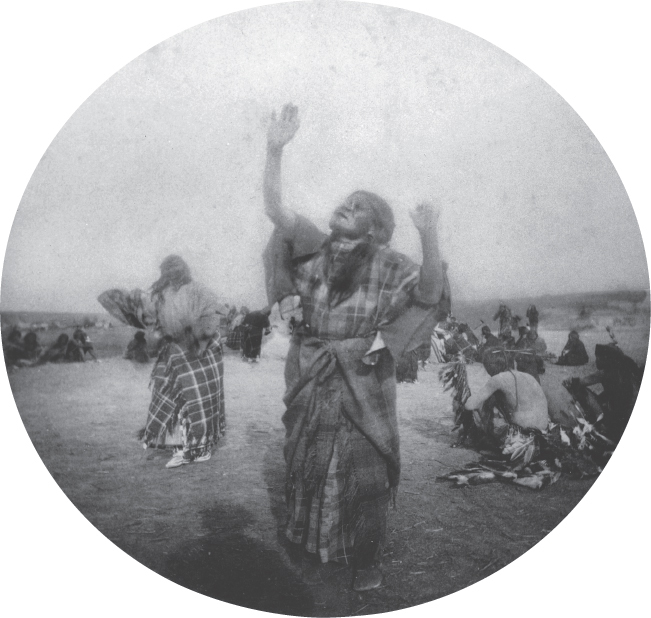In what ways did different Indian groups defy and resist colonial rule?
Printed Page 494

Ghost Dancers
Arapaho women at the Darlington Agency in Indian Territory (Oklahoma) participate in the Ghost Dance. Different tribes performed variations of the dance, but generally dancers formed a circle and danced until they reached the trancelike state shown here. Whites feared the dancers and demanded that the army dispatch troops to subdue them. The result was the killing of Sitting Bull and the massacre at Wounded Knee. National Anthropological Archives, Smithsonian Institution, Washington, D.C. (#81-9626).
IMPERIALISTIC ATTITUDES of whites toward Indians continued to evolve in the late nineteenth century. To “civilize” the Indians, the U.S. government sought to force assimilation on their children. Reservations became increasingly unpopular among whites who coveted Indian land. A new policy of allotment gained favor. It promised to put Indians on parcels of land, forcing them into farming, and then to redistribute the rest of the land to settlers. In the face of this ongoing assault on their way of life, Indians actively resisted, contested, and adapted to colonial rule.
CHRONOLOGY
1877
- – Chief Joseph surrenders.
1879
- – Carlisle Indian School opens.
1886
- – Geronimo surrenders.
1887
- – Dawes Allotment Act.
1889
- – Rise of Ghost Dance.
1890
- – Sitting Bull is killed.
- – Massacre at Wounded Knee, South Dakota.